Tucked in the southeast corner of Alberta are a series of five small historic mining towns – Hillcrest, Bellevue, Frank, Blairmore and Coleman – now collectively known as the Municipality of Crowsnest Pass. In this new series of posts, I’m going to start unpacking historic sites and outdoor adventures that will put the Crowsnest Pass on your must-visit list. First up is a visit to the Hillcrest Mine Disaster Memorial Park.
Disclosure: This post contains affiliate links. If you buy something from one of our affiliates, we receive a small commission at no extra charge to you. Thanks for helping to keep our blog up and running!
Table of Contents
The Hillcrest Mine Disaster
The sky was somber gray. Cool drops of moisture dripped from my bike helmet as I pedalled the Crowsnest Community Trail through the Frank Slide to the Hillcrest Mine Disaster Memorial Park. The weather was a fitting tribute to Canada’s worst mining disaster. On June 19th, 1914 an explosion rocked the Crowsnest Pass. Of the 237 men who went underground that day, only 48 survived.
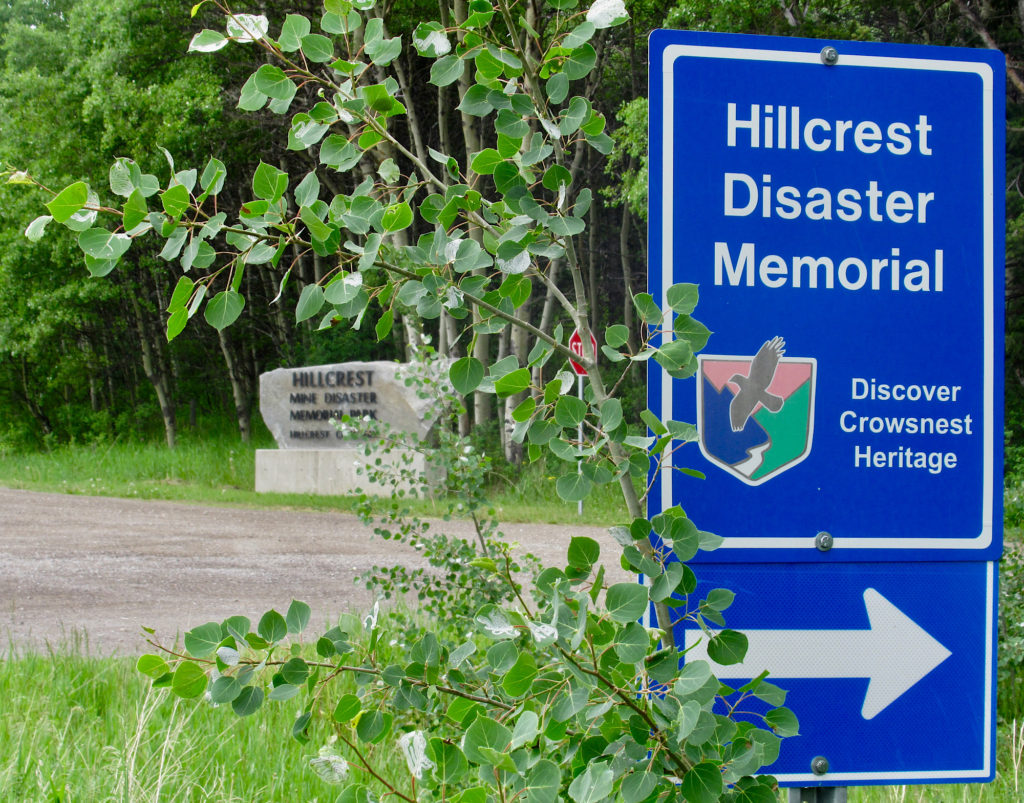
The Crowsnest Pass and Hillcrest
The Crowsnest Pass includes the communities of Hillcrest, Bellevue, Frank, Blairmore and Coleman. They were built in the late 1800s and early 1900s. It was around this time period that the Canadian Pacific Rail expanded its line west of Lethbridge. The CPR was looking to take advantage of the area’s coal deposits.
Charles Plummer “Chippy” Hill staked a coal claim in the Hillcrest area in 1898. Seven years later, the mine opened. Hill named everything after himself, including Hillcrest Coal and Coke Company, Ltd. In 1909, Chippy sold out to a group of investors from Montreal. After that, the new Hillcrest Collieries Ltd. quickly set about organizing and modernizing the mining operations.
June 19th, 1914
The mine produced a little too well. As a result, it was closed for two days before the disaster because of over-production. By 7:00 a.m. on June 19th, the workers had picked up their equipment in the lamphouse and passed through the timekeeper’s office, leaving one of their brass ID tags on the board.
However, small pockets of methane gas had built up in several tunnels. Mine manager James Quigley – and his crew of specialists who worked to control airflow – entered first to introduce sufficient air to dilute the gases. Fifteen minutes later, with better airflow established, the rest of the men followed them in and went to work.
At 9:30 a.m. something triggered a methane gas fire. When it reached pockets of coal dust a series of massive explosions commenced. Charles Ironmonger was a rope-worker. His job was to connect cars to the hoist cable which then hauled them up to the surface. He was the first casualty rescue crews would encounter. Charles was at the entrance to mine when the blast sent him flying 60 feet in the air. He hit the hoist house and died from his injuries shortly after.
A Crowsnest Pass Goodbye
Almost half of the men working in the mine were married at the time of the disaster. Hundreds of children lost their fathers that day. The tragedy affected everyone in the Crowsnest Pass. Two days after the blast, thousands attended the major funeral services and procession. Miner Robert Muir was 54. He was the oldest victim. At 17, Alex Petrie – a bratticeman – was the youngest.
Did You Know? Brattice is a sackcloth made of waxed or tarred jute, however it is impregnable to air flow. The brattice is moved around the mine for barriers to direct the air.
Most of the men who lost their lives in the disaster were buried in the Hillcrest Cemetery. Over 100 of them were laid in one of two mass graves. Most of the men buried in the Union mass grave were Canadian, English or Scottish. They belonged to Anglican, Methodist and Presbyterian churches. The men buried in the Catholic mass grave were mostly from Italy, France or parts of the Austro-Hungarian Empire.
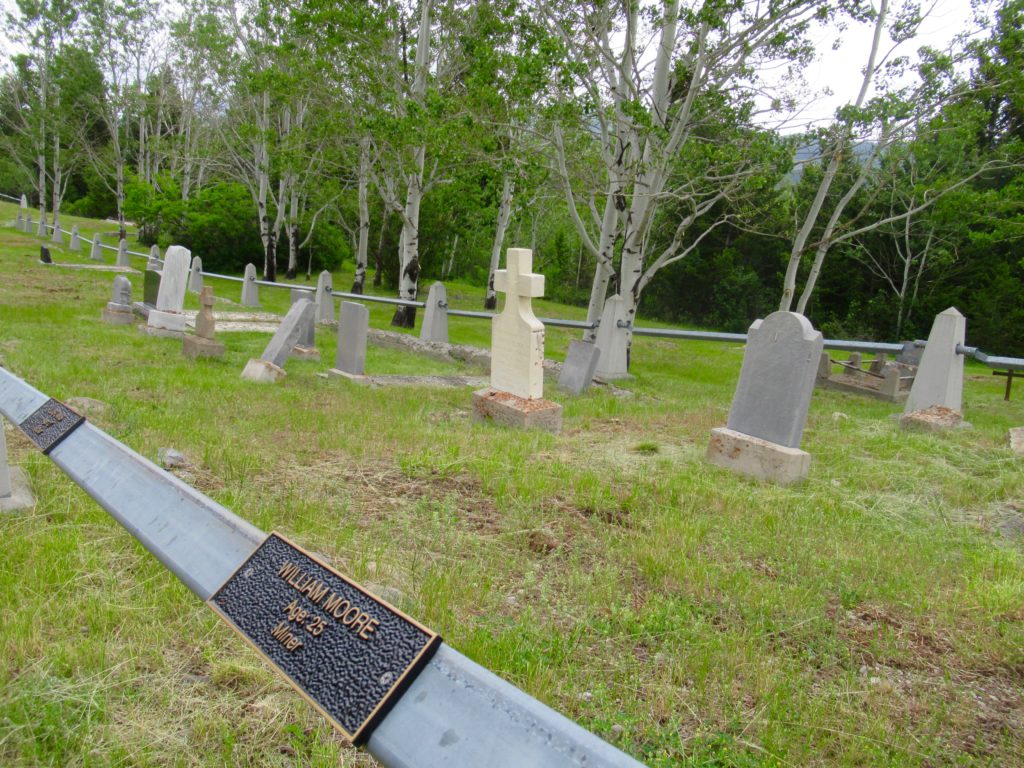
Looking for the Positive Note
The Hillcrest Mine Disaster sparked change. As a result of this incident, legislative changes included the implementation of trained mine rescue teams on every mine site. Regulations regarding occupational health and safety. Workman’s Compensation changed to a no-fault system. It provides better protection for victims and those left behind.
Demand for high-quality coal remained and the Hillcrest Mine eventually reopened. On September 19th, 1926, fireboss Frank Lote began his rounds in the Hillcrest Mine before the night shift crew of 150 men came to work. The only other worker in the mine at the time, Fred Jones, was tending a pumping system. Rockfall struck sparks, igniting methane gas which travelled along the timbers before hitting a pocket of coal dust. The explosion killed both men. The mine reopened within a month, however it closed permanently in 1939.
The Hillcrest Mine Disaster Memorial Park
Today you can follow a circular path through the woods near the Hillcrest Cemetery, reading interpretive panels that tell the story and offer insight into Canada’s worst mining disaster. The names of each victim are found within the Memorial Park.
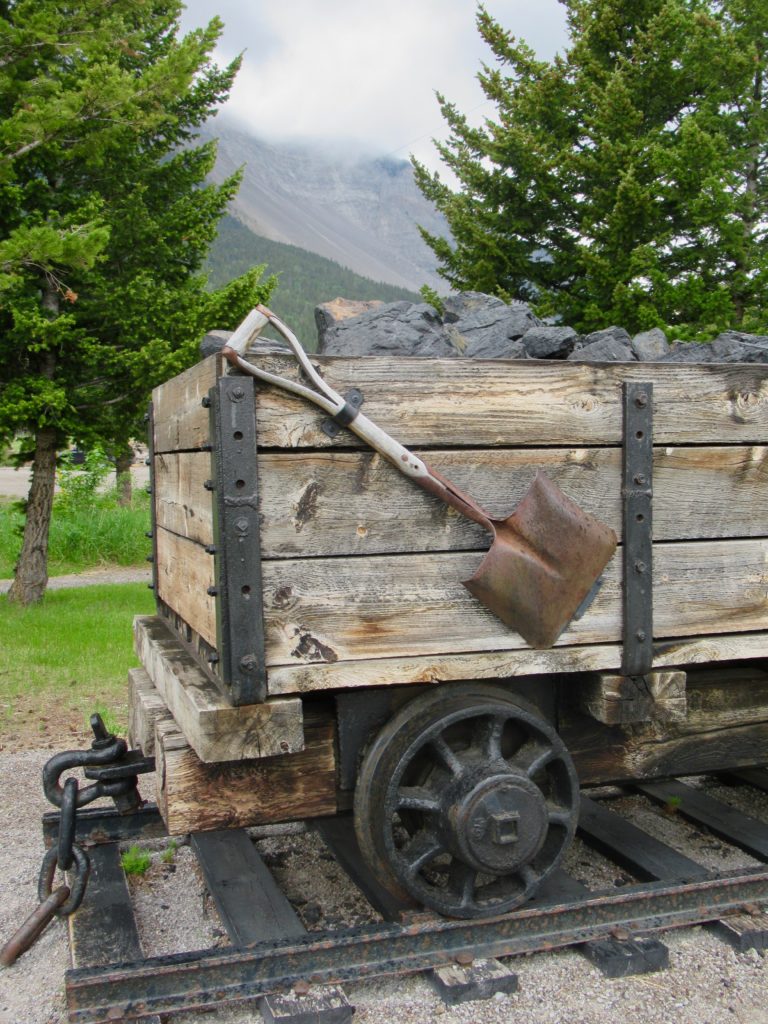
Nearby, an obelisk recognizes not only the 189 men who lost their lives on June 19, 1914 in Hillcrest, but also the victims of other Canadian coal mining tragedies. The cable fence around the Hillcrest Cemetery is made from material salvaged from the Hillcrest Mine. An interpretive panel is stocked with pamphlets with a map for a historic walking tour of the Hillcrest Cemetery – including the names and locations of the burials relating to the Hillcrest mine disaster. As a result of its significance, the cemetery was declared a provincial historic resource in 1985.
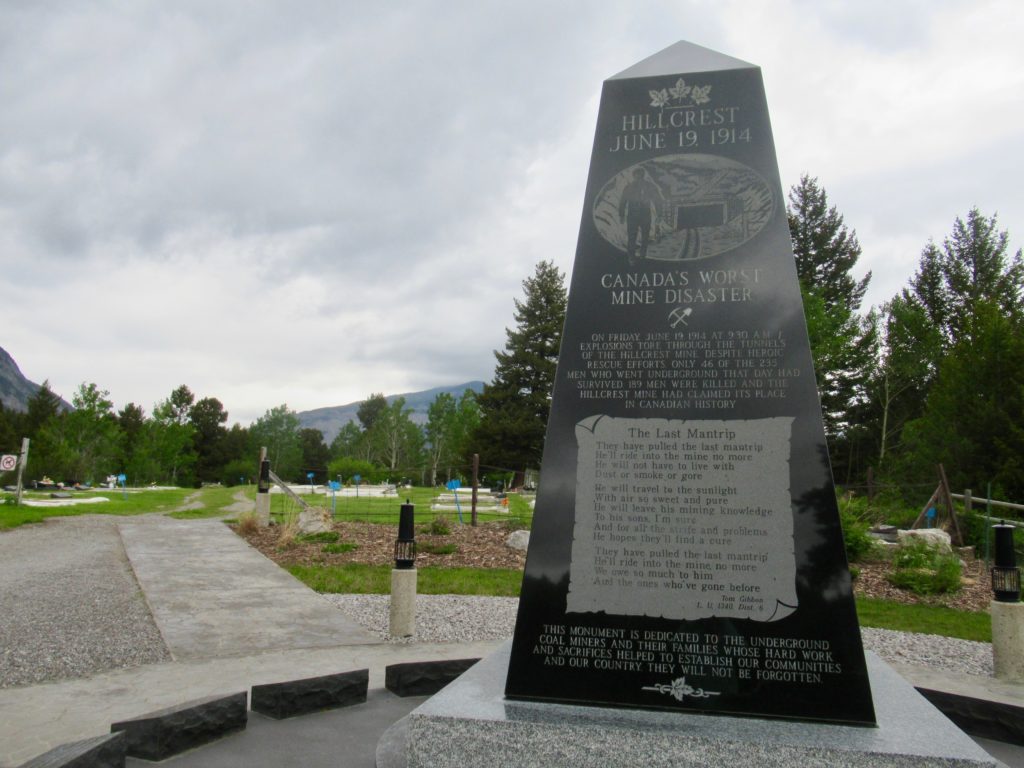
I strolled slowly through the past wandering among the headstones, pausing to read names and pay my respects. The sky continued to weep. Yes, it was a fitting day to reflect on this tragic piece of the Crowsnest Pass’s history.
When You Visit the Crowsnest Pass
- Check out the Crowsnest Community Trails brochure online for a map of the trail which extends from Coleman to Bellevue.
- Expand your day with a visit to the Crowsnest Museum in Coleman.
- For something lighter, try hiking into the Promised Land – and btw, lighter does not mean easier 😉
- Set up for a longer stay with your RV at the Lost Lemon Campground in Blairmore or the Crowsnest Campground at the east gateway to the Crowsnest Pass just off Highway 3.
- Pick up a copy of the Southern Alberta Backroad Mapbook to find other adventures in the Crowsnest and surrounding area.
Appreciate the stories found while exploring historic cemeteries? Be sure to check out this post!
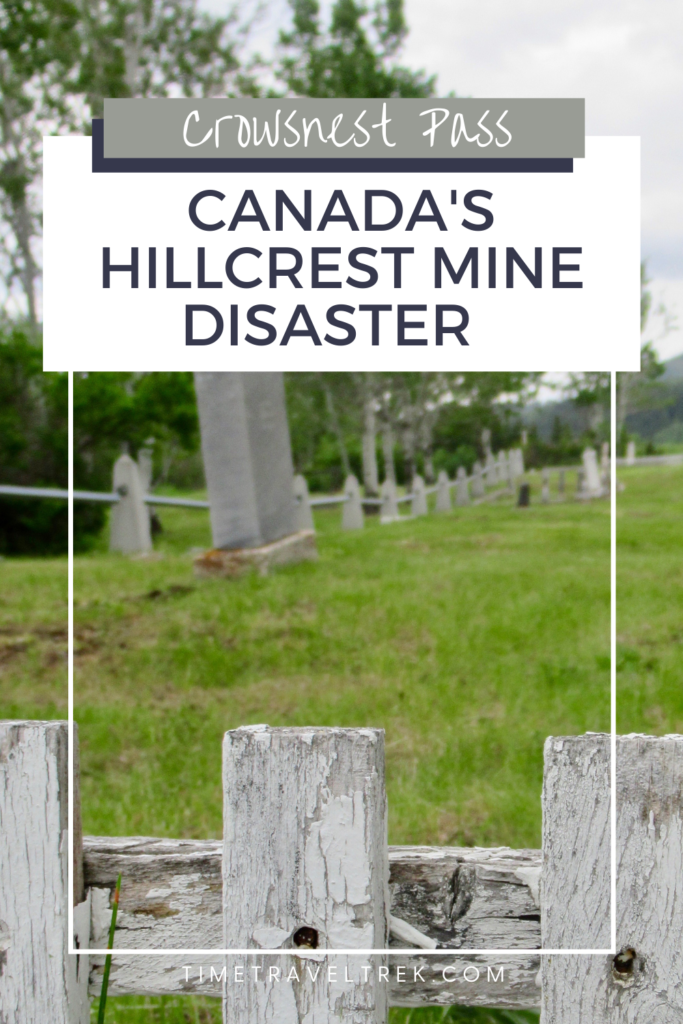
Great post Megan, even though the story behind it is so tragic. I’ve only visited Toronto in Canada, so it’s so interesting to read about about regions, and their history. The park’s a moving tribute to the miners that lost their lives.
Thx Lisa! History matters, IMHO. The more we talk about it, the more we can learn from it.
Great story!! Looking forward to more
Thx Rande; definitely more to follow!